MY VIEWS ON EDUCATION.

"We are faced
with the paradoxical fact that education has become one of the chief obstacles
to intelligence and freedom of thought."
-- Bertrand Russell
Robert Ingersoll stated it best, 'If you truly want to learn a subject matter; teach it'. I teach for selfish reasons: the joy of learning and the challenge of sharing knowledge with others. The opportunity to learn and share with my students presents a never- ending source of joy. It is that glint in the student's eyes, that spark which indicates an insight has taken place. It is hard work to learn, however, when a discovery is made the brain compensates itself with a swift injection of dopamine. The preferred drug of choice; organic clean and always present. It is then that the student is often heard saying, aha or I see. I want to help form lifetime learning addicts who yearn for the next dosage. To string many, ahas together, cascading into a sublime litany of expectations. And finally in the words of Espinoza; "LIFE'S PRINCIPLE AXIOM IS THAT YOUR INSTINCT IS TO PERPETUATE YOURSELF----TO BE PERPETUATION INCLUDES IN ADDITION TO YOUR FINITE LIFE THE EXTENSION OF YOUR MEMORY AND INFLUENCE AFTER YOUR DEATH. A HERO IS PERPETUATED BY HIS GLORIFICATION, OR MORE PROFOUNDLY, THE PRESERVATION OF HIS SOCIETY."
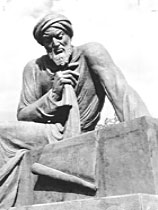
Algebra
This is a mathematical term. It comes from Arabic. Mohammad al-Khwarizmi was
a mathematician who flourished in Baghdad around the year 800. He wrote a
book about the solving of equations. It was called ilm al-jabr wa'l muqabalah
(the science of transposition and cancellation).
The term al-jabr from this title gave the English word, ALGEBRA.
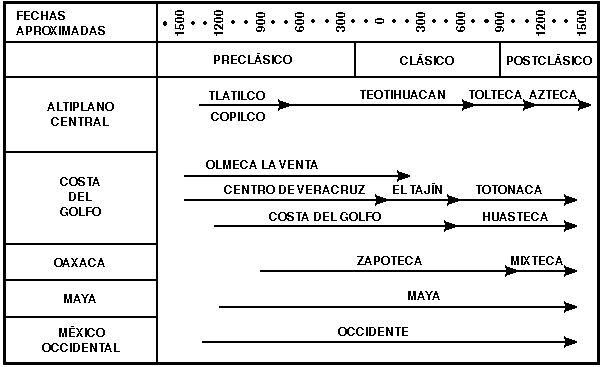
Among the Aztec, cultural preservation relied heavily upon oral transmission and rote memorization of important events, calendrical information, and religious knowledge. Priests and noble elders, who were called conservators, were in charge of education. Since one of the important responsibilities of the conservator was to censor new poems and songs, he took the greatest care in teaching poetry, particularly divine songs.
At the calmecac, the school for native learning where apprenticeship started at the age of 10, the history of Mexico and the content of the historical codices were systematically taught. The calmecac played the most vital role in ensuring oral transmission of history through oratory, poetry, and music, which were employed to make accurate memorization of events easier and to galvanize remembrance. Visual aids, such as simple graphic representations, were used to guide recitation phases, to sustain interest, and to increase comprehension of facts and dates.
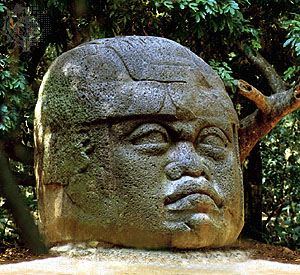
Education for the Inca nobility consisted of a four-year program that was clearly defined in terms of the curricula and rituals. In the first year the pupils learned the Quechua language, the language of the nobility. The second year was devoted to the study of religion and the third year to learning about the quipus,[sketch below] a complex system of knotted coloured strings or cords used for sending messages and recording historical events. In the fourth year major attention was given to the study of history, with additional instruction in sciences, geometry, geography, and astronomy. The instructors were highly respected encyclopaedic scholars known as amautas. After the completion of this education, the pupils were required to pass a series of rigorous examinations in order to attain full status in the life of the Inca nobility.
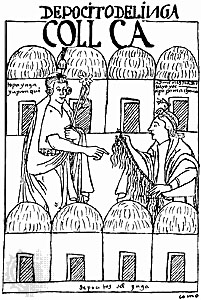
 It is important to note that the number system of Mesoamerica was for ahead
of the European people, they were still struggling with the Roman numeral
system. That system suffered from serrious defects: there was no zero in
the system, and, as opposed to the Mayan system, the numbers were entirely
symbolic, without direct connection to the number of items represented.
It is important to note that the number system of Mesoamerica was for ahead
of the European people, they were still struggling with the Roman numeral
system. That system suffered from serrious defects: there was no zero in
the system, and, as opposed to the Mayan system, the numbers were entirely
symbolic, without direct connection to the number of items represented.

 The Hindu tradition. The method of instruction differed according to the
nature of the subject. The first duty of the student was to memorize the
particular Veda of his school, with special emphasis placed on correct pronunciation.
In the study of such literary subjects as law, logic, rituals, and prosody,
comprehension played a very important role. A third method was the use of
parables, which were employed in the personal spiritual teaching relating
to the Upanishads, or conclusion of the Vedas. In higher learning, such
as in the teaching of dharmashastra ("righteousness science"), the most
popular and useful method was catechism--the pupilaskingquestions
and the teacher discoursing at length on the topics referred to him. Memorization,
however, played the greatest role.
Quintilian advises the teacher to apply different
teaching methods according to the different characters and abilities of
his pupils; he believes that the young should enjoy their studies and knows
the value of play and recreation; he warns against the danger of discouraging
a pupil by undue severity; he makes an effective criticism of the practice
of corporal punishment; he depicts the schoolmaster as taking the place
of a parent. "Pupils," he writes, "if rightly instructed regard their teacher
with affection and respect. And it is scarcely possible to say how much
more willingly we imitate those we like." AD90.
The Hindu tradition. The method of instruction differed according to the
nature of the subject. The first duty of the student was to memorize the
particular Veda of his school, with special emphasis placed on correct pronunciation.
In the study of such literary subjects as law, logic, rituals, and prosody,
comprehension played a very important role. A third method was the use of
parables, which were employed in the personal spiritual teaching relating
to the Upanishads, or conclusion of the Vedas. In higher learning, such
as in the teaching of dharmashastra ("righteousness science"), the most
popular and useful method was catechism--the pupilaskingquestions
and the teacher discoursing at length on the topics referred to him. Memorization,
however, played the greatest role.
Quintilian advises the teacher to apply different
teaching methods according to the different characters and abilities of
his pupils; he believes that the young should enjoy their studies and knows
the value of play and recreation; he warns against the danger of discouraging
a pupil by undue severity; he makes an effective criticism of the practice
of corporal punishment; he depicts the schoolmaster as taking the place
of a parent. "Pupils," he writes, "if rightly instructed regard their teacher
with affection and respect. And it is scarcely possible to say how much
more willingly we imitate those we like." AD90.

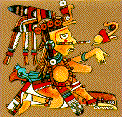 Earlier, in 1371, Groote had joined Florentius Radewunius (of the Church
of St. Lebunus in Deventer) in gathering together at one residence a number
of impoverished scholars who wished to earn income by copying manuscripts.
Out of this grew the Brethren of the Common Life, an order approved by Pope
Gregory XI. The Brethren's houses spread rapidly throughout the Netherlands
and Germany, and, as a teaching order, the Brethren deeply influenced patterns
of elementary and secondary education throughout Europe, stressing Humanistic
studies and Latin and establishing graded schooling and new textbooks. Erasmus
was one of many northern European scholars who studied under the Brethren
during the late Middle Ages. The Brethren of the Common Life declined after
the invention of printing and the rise of new teaching orders and universities,
their last house closing in 1811
De pueris instituendis, written in Italy though not published
until 1529, is the clearest statement of Erasmus' enormous faith in the
power of education. With strenuous effort the very stuff of human nature
could be molded, so as to draw out (e-ducare) peaceful and social dispositions
while discouraging unworthy appetites. Erasmus, it would almost be true
to say, believed that one is what one reads. Thus the "humane letters" of
classical and Christian antiquity would have a beneficent effect on the
mind, in contrast to the disputatious temper induced by scholastic logic-chopping
or the vengeful amour propre bred into young aristocrats by chivalric literature,
"the stupid and tyrannical fables of King Arthur."
In Émile- (1762), one of the most influential
books on education ever written, Rousseau argued that one should protect
the child from the corruptions of civilization and carefully nurture his
natural, spontaneous impulses, which were always healthy.
Earlier, in 1371, Groote had joined Florentius Radewunius (of the Church
of St. Lebunus in Deventer) in gathering together at one residence a number
of impoverished scholars who wished to earn income by copying manuscripts.
Out of this grew the Brethren of the Common Life, an order approved by Pope
Gregory XI. The Brethren's houses spread rapidly throughout the Netherlands
and Germany, and, as a teaching order, the Brethren deeply influenced patterns
of elementary and secondary education throughout Europe, stressing Humanistic
studies and Latin and establishing graded schooling and new textbooks. Erasmus
was one of many northern European scholars who studied under the Brethren
during the late Middle Ages. The Brethren of the Common Life declined after
the invention of printing and the rise of new teaching orders and universities,
their last house closing in 1811
De pueris instituendis, written in Italy though not published
until 1529, is the clearest statement of Erasmus' enormous faith in the
power of education. With strenuous effort the very stuff of human nature
could be molded, so as to draw out (e-ducare) peaceful and social dispositions
while discouraging unworthy appetites. Erasmus, it would almost be true
to say, believed that one is what one reads. Thus the "humane letters" of
classical and Christian antiquity would have a beneficent effect on the
mind, in contrast to the disputatious temper induced by scholastic logic-chopping
or the vengeful amour propre bred into young aristocrats by chivalric literature,
"the stupid and tyrannical fables of King Arthur."
In Émile- (1762), one of the most influential
books on education ever written, Rousseau argued that one should protect
the child from the corruptions of civilization and carefully nurture his
natural, spontaneous impulses, which were always healthy.
 Education, The Churches and. J. McCabe, Rationalists Encyclopaedia The legend
that Christianity "gave the world schools," which is still repeated even
by apologists who consider themselves above the popular class, is, like
similar claims in regard to slavery, philanthropy, purity, etc., the exact
opposite of the historical facts as they are recorded in every manual of
the history of education published since the middle of the last century.
Indeed, the Roman system of free education had been described repeatedly
since the classical revival of the fifteenth century, and even in Christian
circles every biography of Augustine of Hippo had described how he found
free pagan schools, primary and secondary, even in the smaller towns of
Africa. In earlier civilizations a good deal of schooling had been provided
for boys (occasionally girls) of the middle class, as we find in Egyptian
and Babylonian remains, but they all, including Greece, regarded the education
of the workers as superfluous. Under the influence of the Stoic-Epicureans,
long before bishops had the least influence, the Roman Emperors created
a system of schools, maintained by the municipalities, for all freeborn
children. By the fourth century the "ladder of education" (free to all)
stretched, in all parts of the Empire, from the simple primary school, often
in the open air, through secondary schools to a sort of university at Rome
(and in a few other cities). See the details in Laurie's Historical Survey
of Pre-Christian Education (1900) or any modern manual. These schools, in
which the text-books were, naturally, Pagan literature, were offensive and
dangerous to the Church, and the fact that in so intellectually busy a city
as Alexandria the Christians opened a few small schools rather reminds us
of the fable of the fly on the chariot - wheel when we are asked to regard
this as the beginning of education.
Education, The Churches and. J. McCabe, Rationalists Encyclopaedia The legend
that Christianity "gave the world schools," which is still repeated even
by apologists who consider themselves above the popular class, is, like
similar claims in regard to slavery, philanthropy, purity, etc., the exact
opposite of the historical facts as they are recorded in every manual of
the history of education published since the middle of the last century.
Indeed, the Roman system of free education had been described repeatedly
since the classical revival of the fifteenth century, and even in Christian
circles every biography of Augustine of Hippo had described how he found
free pagan schools, primary and secondary, even in the smaller towns of
Africa. In earlier civilizations a good deal of schooling had been provided
for boys (occasionally girls) of the middle class, as we find in Egyptian
and Babylonian remains, but they all, including Greece, regarded the education
of the workers as superfluous. Under the influence of the Stoic-Epicureans,
long before bishops had the least influence, the Roman Emperors created
a system of schools, maintained by the municipalities, for all freeborn
children. By the fourth century the "ladder of education" (free to all)
stretched, in all parts of the Empire, from the simple primary school, often
in the open air, through secondary schools to a sort of university at Rome
(and in a few other cities). See the details in Laurie's Historical Survey
of Pre-Christian Education (1900) or any modern manual. These schools, in
which the text-books were, naturally, Pagan literature, were offensive and
dangerous to the Church, and the fact that in so intellectually busy a city
as Alexandria the Christians opened a few small schools rather reminds us
of the fable of the fly on the chariot - wheel when we are asked to regard
this as the beginning of education.
The Fathers were, in fact, overwhelmingly opposed to education and expressed a contempt for profane knowledge. "After Jesus Christ," said Tertullian, "all curiosity is superfluous." In the last century a French priest, the Abbé Gaume, contending that the classics ought to be excluded from every Catholic college, quoted a long series of such sentiments from the works of the Fathers (Le ver rongeur des sociétés modernes 1851). Even Augustine, in his later years, joined in the chorus, and the murder of Hypatia and the closing of the great school at Alexandria, followed later by the closing of the schools at Athens by Justinian, are well-known facts. The work of the apologists is, in fact, so clumsily conducted that instead of pleading, as they might, that after the fall of the Empire it was economically impossible to maintain the vast system of schools, Christian writers give their readers the curious impression that it was just at this time that schools began to multiply. It is a commonplace of historical manuals that the Roman schools perished almost without trace. "With few exceptions they had disappeared by the sixth century," says Dr. W. Boyd, who is by no means anti-clerical, in his History of Western Education (1921, p. 100). Dr. Boyd thinks that schools survived best in Christian Gaul, but Denk, who makes a special study of schools in this region in his Geschichte des Gallo-Frankischen Unterrichts (1892), shows that you could count them on your lingers. The Ostrogothic monarch, Theodoric and his daughter Amalasuntha had made a noble effort to save civilization and restore education, but the Popes intrigued with their enemies and ruined it. We find Gregory I ("the Great") rebuking a French bishop for the "horrible crime" of opening a school (Ep. LIV, Migne Collection); and instead of this the chief Papal historian of this period, Mgr. Mann, quotes a "work of Gregory" which the Benedictine editors themselves declare spurious.
On a balanced view of education in the Dark Age - the facts are now given quite consistently in every detailed manual - we see an appalling intellectual collapse. The Roman workers (excluding slaves) had all had free education, but in the impoverished new Europe, in which 90 to 95 per cent. were now serfs, almost none, apart from priests and monks, had education; and many priests could not read the Mass, while the bulk of the monks were illiterate and sensual idlers [see Monks]. Here and there, at one period or another, a bishop like Isidore of Seville gave his clergy some culture. Here and there an abbot feebly illumined his district for a time; but of the much-vaunted zeal of the British and Irish monks in the first century of their Christian fervour, Prof. Boyd observes that "in pre-Christian times education flourished in Ireland and other Catholic countries," so that the apostles of Christianity were compelled to adopt "the cultural interests and educational work of the Druids" (p. 112). He would, of course, not question that this early Celtic zeal did much work for a time in Britain and France, but this work is often wrongly represented as a broad educational development. Little was taught except theology, and the pupils were nearly all - to some extent sons of the nobles were included - monks or clerics. The work of Charlemagne, on the other hand, is now recognized as of very little significance. Stimulated during his first visit to Italy by the high culture of the anti-Papal Lombards , he ordered all his bishops and abbots to open schools. Few did, and the scheme was abandoned as soon as he died [see Charlemagne]. Rome itself remained so backward that we have legal documents of the tenth century which ladies of the highest noble family have signed with a mark because they could not write their names (Gregorovius, History of the City of Rome, III, 258).
The myth of the monks and classical literature has been exposed elsewhere (Classics, The Monks and the), and just as, or even more, reckless is the Catholic boast, based upon the egregious work of Montalembert, of the libraries of the monks. On dubious evidence they claim that there were monasteries in the later Middle Ages with 6,000 or 7,000 volumes - we know that in the thirteenth century the library at Canterbury, presumably one of the best in England, had only 1,800 (Catholic Encyclopaedia) - whereas by the ninth century the Spanish Arabs had myriads of libraries of beautifully bound books, superbly housed, rising to the royal library of at least 400,000. [See Libraries.] Such was the height of the nominally Moslem, but very largely sceptical, culture of the Arabs and Persians from Portugal to Baluchistan. Is was this culture and the provision of schools for nearly all children - see the works of Prof. Ballesteros and Prof. Ribera - that at last inspired a school-movement in Christendom. We find it beginning in the south of France in the tenth century, when the education of Gerbert and his Arab schooling plainly show the inspiration; and the spread of this school-movement over the whole of the south of France in the eleventh century was the dawn of the age of wandering scholars and universities. [See Abelard and Universities.]
In Italy the movement was later, and it began in the south, close to Arab Sicily, while Rome still lagged behind the other cities. It is, further, a matter of history that this school-movement, which is considered one of the glories of the Middle Ages, was at first very largely independent of the Church and as broad in its curriculum as the state of learning permitted; and that the Church suppressed the free colleges, eliminated the teaching of science, and turned most of the universities into theological cockpits for crowds of monks and clerics.
In the next phase we meet claims that the Reformers on the one hand, and the Jesuits on the other, gave a great impetus to education. Both sides concentrated on the religious issue, the Jesuit education in particular being a narrow and poisonous system for making sons of the wealthy and the nobles hate Protestantism. In point of fact, however, and although we should expect the invention of printing and the manufacture of paper to stimulate education, the references to new Protestant and Jesuit schools and colleges are very misleading. The figures of illiteracy in the various countries of Europe at the beginning of the nineteenth century make a mockery of all educational claims for earlier dates. The French Revolution had directed Talleyrand to draft a fine scheme, which we have, of universal free education, and the ideal was passed on to Switzerland, Spain, and Italy. Napoleon had here in part maintained the revolutionary ideal; but, after his fall, Catholic countries - and again the Pope's dominions were the worst - sank back into a lamentable condition, while Rationalists like Pestalozzi, Froebel, Robert Owen, and Bentham worked for universal education.
It is enough to tell the development in England. The demands of the humanitarians opened the eyes of all to the disgraceful situation, and a Quaker, Lancaster, supported by the Atheists Owen, Place, and Bentham, founded a system of undenominational schools; to which the Church of England, in its own interests, reacted by opening a large number of very primitive schools of its own for the children of the workers. But the bishops fiercely resisted for thirty years the grant of any national subsidy, and for forty further years obstructed the demand for a national system. See the details in Holman's English National Education (1898) or any other history. At the beginning of the nineteenth century 90 per cent. of the people were still illiterate in England - which fully discredits all pre-Reformation or post-Reformation claims. Fifty per cent. were still illiterate when Parliament was permitted to make an annual grant of £20,000 (and £70,000 for the royal stables) in 1833. The bishops walked in procession from the House to the Palace to protest against the establishment of a national system, and their hostility was not broken until 1870. The same fierce struggle against the clergy had to be waged in nearly every country before the modern system - which we now regard as indispensable to civilization - could be established. See articles in the Encyclopaedia of Education (5 vols., 1912), issued by Columbia University, or any modern manual of the history of education. A Student's History of Education by Pres. Graves (1936) has the weakness of much recent American history generalizing (favourably to Catholics) on small achievements in the Middle Ages, and it is poor in exact detail.
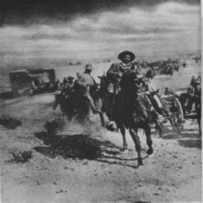
General Villa's great passion was schools. He believed that land for the people and schools would settle every question of civilization. Schools were an obsession with him. Often I [John Reed] have heard him say: "When I passed such and such a street this morning I saw alot of kids. Let's put a school there." Chihuahua has a population of under 40,000 people. At different times Villa established over fifty schools there. The great dream of his life has been to send his son to school in the United States, but at the opening on the term in Feburaray he had to abandon it because he didn't have money enough to pay for a half year's tuition.
GO TO MY EDUCATIONAL PHILOSOPHY II ?.